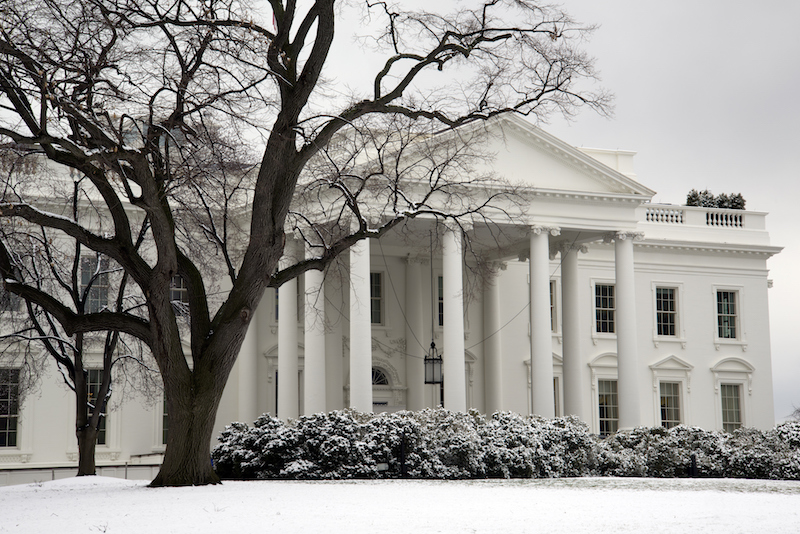
The Trump Administration’s regulatory rollback highlights the opportunities and obstacles that lie ahead.
Red tape in America has risen precipitously over the past 30 years. Based on cost analyses prepared by regulators, the Obama Administration alone added over $120 billion in additional regulatory burdens imposed on Americans each year. In contrast, President George W. Bush added $68 billion during his tenure. A major goal of the Trump Administration is to reverse this trend: not just to slow the increase, but to decrease the total burden of regulation on Americans.
This goal is implicit in one of Trump’s first executive orders as chief executive, Executive Order 13,771, which directs agencies to identify for repeal at least two existing regulations for every new regulation that they promulgate. The White House Office of Information and Regulatory Affairs, now under the energetic leadership of former law professor Neomi Rao, reads into this a broader injunction to eliminate more regulatory burdens than are created for each new rule.
Such a target is ambitious. No net rollback of red tape has been seen since President Ronald Reagan’s second year in the White House a generation ago. Yet, the betting in Washington is that the Trump Administration can pull it off.
In fact, more than a few observers have already given President Trump’s team premature credit for achieving success in rolling back regulations—even though the toughest challenges still remain ahead. For instance, Investor’s Business Daily recently editorialized that, although many Presidents have talked about getting rid of regulations, “Trump is actually doing it.” Other outlets and think tanks have dubbed President Trump’s actions “the biggest regulatory rollback in U.S. history” and declared President Trump the “least regulatory President since Reagan.”
But as yet, no major rule —defined by statute as one with an impact of $100 million or more—has actually been deleted from the books. This should come as no surprise. As Rao, the OIRA Administrator, has admitted in a recent speech at The Heritage Foundation, “Deregulation is hard—something I’ve learned in the past three months.” Given the procedural and institutional obstacles to repealing a rule, it is unlikely that any administration would be able to achieve substantial deregulation in its first year.
But what of the many apparent regulatory victories this year? They are real, but a lack of clarity about differences between blocking new rules and rolling back existing regulation is confusing the debate. Both are important to limiting red tape costs, and, although the first will limit future burdens, only the second will reduce burdens on Americans.
The Congressional Review Act (CRA), for example, which creates a fast-track process by which Congress can block rules issued by regulatory agencies, was used this year to stop 15 Obama-era rules from being implemented. But the CRA does not apply to rules already in place; it can only be used to block new regulations before they take effect. It should also be noted that, of the 15 rules disapproved under the CRA, only two were “major” out of the nearly two dozen major rules adopted during 2017.
While working toward rolling back existing rules, the Trump regulatory reform team has also kept a tight lid on new rules. According to the U.S. Government Accountability Office’s database on federal rules, through the first ten months of Trump’s tenure, only 20 major new rules were imposed. Of these, only six increased regulatory burdens. Two others delayed them. The remaining new rules were administrative and budgetary rules setting reimbursement rates for Medicaid, limiting migratory bird hunting, and the like.
The six rules increasing burdens is far less than the 18 major new burden-imposing rules under President Obama during the same period and comes close to the three such rules restricting private sector activity under President George W. Bush.
President Bush’s experience, in fact, should serve as a cautionary tale for President Trump and other regulatory reformers. Like President Trump, President Bush started out with a string of apparent successes, garnering widespread praise from reformers for his plans to repeal unneeded rules. But when President Bush departed the White House eight years later, few rules had been rolled back, and the rate of increase of regulatory burdens rivaled that of the Obama Administration.
Will the Trump Administration follow the same well-trod path toward unspooling ever more red tape? That is a real danger. Yet there is reason to hope that, this time, things will be different. On a growing number of fronts, concrete proposals to eliminate major, existing burdens from the books are moving forward.
EPA has been a hotbed of rollback efforts—ranging from the proposed repeal of the Obama Administration’s 2015 Clean Power Plan to the repeal of the Waters of the United States rule, which was jointly promulgated with the U.S. Army Corps of Engineers in 2015. If successful, these two rescissions would save billions for energy consumers and go a long way toward meeting the Trump Administration’s goal of a net decrease in regulatory burdens. EPA has recently lost a series of court cases challenging changes to other Obama-era environmental rules, showing how difficult it can be to get reforms past the finish line.
One agency that seems to be enjoying success in rolling back old and costly rules is the Federal Communications Commission (FCC) under Chairman Ajit Pai. Shortly after Pai took over, the FCC proposed repealing the net neutrality rules imposed by the Obama-era FCC. Despite intense efforts by pro-regulation activists to save the rule, it is expected to be eliminated at the FCC’s December 14 meeting, making it the first major rule to be repealed under the new Administration. The FCC also recently repealed a number of other non-major but notable rules, including several media cross-ownership rules dating back to 1975. Significantly, this aggressive action makes the FCC one of the only agencies to pursue repeal of pre-Obama rules.
Even at the FCC, however, regulatory rollbacks are no slam dunk. Both the net neutrality and cross-ownership rules have been long mired in litigation, with FCC actions to increase or decrease their burden perpetually being challenged in court on a seemingly endless cycle.
For decades, the burden of federal regulation has grown without pause. The Trump Administration wants to change this, pursuing an almost unheard of decrease in that burden. So far, it has succeeded in slowing regulatory output. But the work of reducing existing regulatory burdens on Americans is only now beginning. And there are a number of initiatives well underway aimed at repealing significant and costly rules.
Although public praise for effecting the biggest regulatory rollback ever is certainly premature, that goal is nevertheless well within reach. The question is, can President Trump ultimately achieve it?




